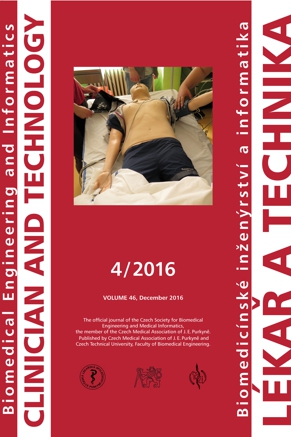CARDIOPULMONARY EXERCISE TESTING FOR VO2MAX DETERMINING IN SUBJECTS OF DIFFERENT PHYSICAL ACTIVITY
Keywords:
cardiopulmonary exercise testing, VO2max, bicycle ergometer, regression equations, measuring systemAbstract
Cardiopulmonary exercise testing (CPET) provides assessment of the integrative exercise responses involving the pulmonary, cardiovascular, haematopoietic, neuropsychological, and skeletal muscle systems, which are not adequately reflected through the measurement of individual organ system function. This non-invasive, dynamic physiological overview permits the evaluation of both submaximal and peak exercise responses, providing the doctor with relevant information for clinical decision making. CPET is increasingly being used in a wide spectrum of clinical applications for the evaluation of undiagnosed exercise intolerance and for the objective determination of functional capacity and impairment. Its use in patient management is increasing with the understanding that resting pulmonary and cardiac function testing cannot reliably predict exercise performance and functional capacity and that overall health status correlates better with exercise tolerance than with resting measurements. CPET involves measurements of respiratory oxygen uptake, carbon dioxide expenditure and pulmonary ventilation during a step-vice increased physical workload up to the maximum (or symptom-limited level in patients) on ergometer. In this paper the principle of CPET is described and results for VO2max and VO2max/kg of almost 3000 measurements in subjects of different physical activity are presented. These values characterizing cardiorespiratory capacity of the subjects were compared to the values of maximal performance achieved during stress test on bicycle ergometer (Wmax and Wmax/kg) and regression equations for VO2max – Wmax and VO2max/kg – Wmax/kg were calculated.
Downloads
Published
Issue
Section
License
Copyright (c) 2017 Milan Stork, Jaroslav Novak, Vaclav Zeman

This work is licensed under a Creative Commons Attribution 4.0 International License.
Authors who publish with this journal agree to the following terms:
- Authors retain copyright and grant the journal right of the first publication with the work simultaneously licensed under a Creative Commons Attribution License (https://creativecommons.org/licenses/by/4.0/) that allows others to share the work with an acknowledgment of the work's authorship and initial publication in CTJ.
- Authors are able to enter into separate, additional contractual arrangements for the non-exclusive distribution of the journal’s published version of the work (e.g., post it to an institutional repository or publish it in a book), with an acknowledgment of its initial publication in this journal.
- Authors are permitted and encouraged to post their work online (e.g., in institutional repositories or on their website or ResearchGate) prior to and during the submission process, as it can lead to productive exchanges.
CTJ requires that all of the content of the manuscript has been created by its respective authors or that permission to use a copyrighted material has been obtained by the authors before submitting the manuscript to CTJ. CTJ requires that authors have not used any copyrighted material illegally, as for example a picture from another journal or book, a photo, etc. It is the author’s responsibility to use only materials not violating the copyright law. When in doubt, CTJ may ask the authors to supply the pertinent permission or agreement about the use of a copyrighted material.
The opinions expressed in CTJ articles are those of authors and do not necessarily reflect the views of the publishers or the Czech Society for Biomedical Engineering and Medical Informatics.


